15 Old Wives’ Tales From The ’40s And ’50s That People Still Believe
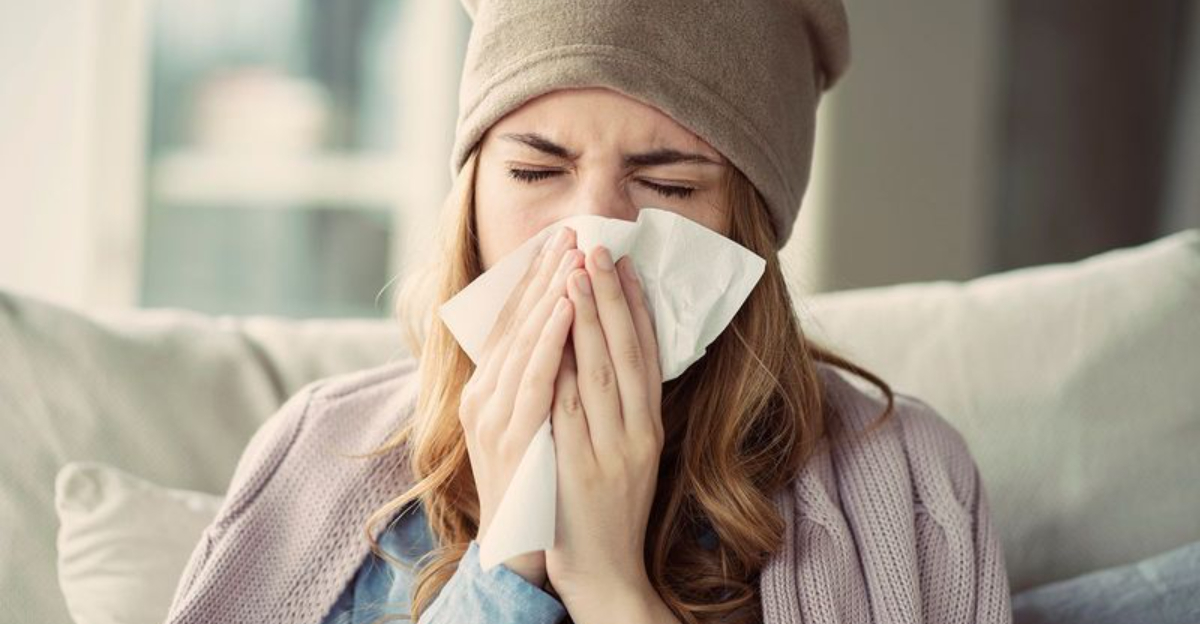
Back in the ’40s and ’50s, wisdom didn’t always come from books — sometimes it came from Grandma’s rocking chair, Dad’s knowing glance, or that one neighbor who “just knew things.”
These quirky little tales were passed down like family heirlooms, wrapped in just enough mystery to sound almost believable.
Whether it was warnings about going cross-eyed forever or the magical night vision supposedly gifted by carrots, these sayings shaped childhoods as much as hopscotch, hula hoops, and Saturday morning cartoons.
Growing up, I often wondered if my parents were secret folklorists or just wildly imaginative — either way, their stories stuck. And somehow, despite science, common sense, and Google, some of them are still alive today.
So let’s rewind the clock and dive into 15 old wives’ tales that made us think twice before swallowing gum or cracking our knuckles. And hey — laughter is the best medicine… unless your mom told you it causes hiccups.
1. Sitting Too Close to the TV Will Ruin Your Eyes

TVs were the villains of the living room, apparently. Boomers grew up convinced they’d go blind from watching cartoons a foot away. My mom insisted that my eyes would turn square if I didn’t scoot back. Despite the dire warnings, I’m still wearing glasses—not square ones, though!
In reality, sitting close to the TV might strain your eyes, but it doesn’t cause permanent damage. This myth likely stemmed from earlier TV models emitting higher levels of radiation, but modern TVs are much safer. Parents back then didn’t have the luxury of screen time warnings on their devices.
Nowadays, we know the importance of taking breaks from screens, but back then, it was more about keeping kids from becoming couch potatoes. While technology has evolved, the desire to protect young eyes remains the same, albeit with a little less drama.
2. Going Outside With Wet Hair Will Give You a Cold

This tale had moms everywhere yelling mid-shampoo rinse. Sorry, colds come from viruses—not damp bangs. My grandmother would wag her finger at my wet-haired ventures, convinced the wind would whip up a case of the sniffles.
Stepping outside with wet hair in chilly weather might make you chilly, but it won’t invite viruses. Cold weather might keep you indoors, where germs spread more easily, but it’s not your wet hair’s fault.
Despite the myth, many kids like me braved the outdoors with damp locks, only to be admonished upon return. The real lesson here? Always listen to grandma—but maybe take her medical advice with a grain of salt. It seems the real culprit behind those sneezes is more about shared spaces than wet tresses.
3. Cracking Your Knuckles Causes Arthritis
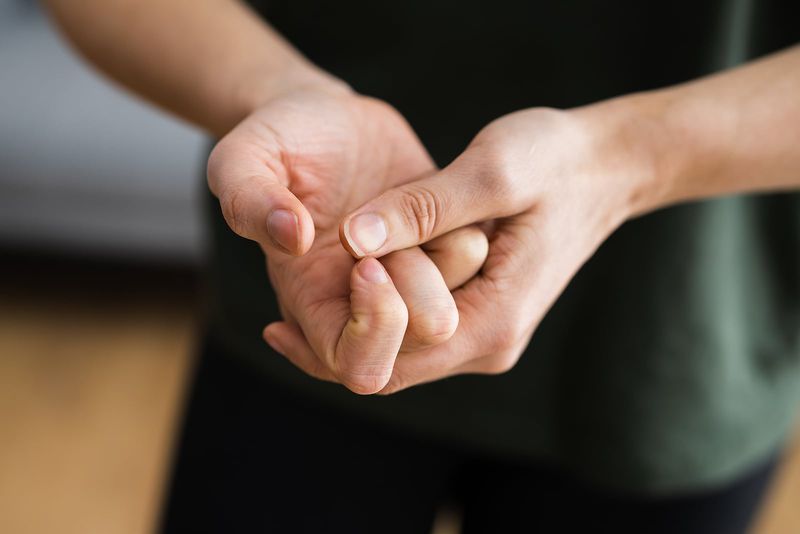
Snap, crackle, pop—and supposedly, joint doom. Turns out, the only consequence is annoying everyone around you. My uncle would theatrically crack his knuckles, much to my aunt’s dismay, who was convinced arthritis was just a knuckle crack away.
Scientific studies have shown that knuckle cracking doesn’t cause arthritis. The popping sound is due to gas bubbles bursting in the synovial fluid, not the harbinger of joint pain. So, while knuckle cracking might not win you friends at a quiet dinner, it won’t spell your joint downfall either.
The real danger? Making too much noise and risking a glare. So, crack away if you must, but maybe keep it to a solo activity. Remember, what really matters is keeping joints healthy with regular exercise, not avoiding a satisfying knuckle crack.
4. If You Swallow Gum, It Stays in Your Stomach for Seven Years
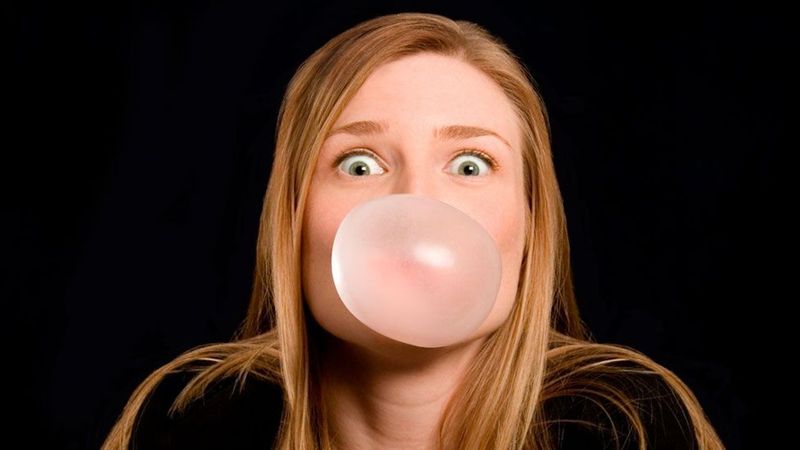
Seven years! That’s longer than some marriages. In reality, gum passes through just like everything else. My friends and I once tested this by counting the days—spoiler: we got bored quickly.
Swallowed gum doesn’t stick around for long, as your digestive system is quite efficient. It can’t break down gum, but it moves along with other waste. The myth likely started to keep kids from swallowing gum excessively.
So, while it’s not advisable to make a habit of chomping down on gum, your stomach isn’t a long-term storage facility. The next time you accidentally swallow your gum, fear not—it won’t be there for story time seven years later! And remember, life’s too short to chew the same piece for years.
5. Don’t Cross Your Eyes or They’ll Get Stuck That Way

Your face isn’t going to freeze like that… but it did stop a lot of funny-face competitions. I vividly remember my brother trying this and getting scolded for potentially ruining his looks for life.
Crossing your eyes involves voluntary muscle control and won’t cause them to stick. The myth was more about prevention than reality, perhaps to keep kids from contorting their faces in public. The allure of making silly faces was irresistible, but the fear of being stuck was enough to pause our contortions.
The real trick? Knowing when to straighten up before mom caught you. Ultimately, the only thing at risk was your dignity when caught mid-contortion. Thanks to this myth, I perfected the art of uncrossing quickly, just in case.
6. Sugar Makes Kids Hyper
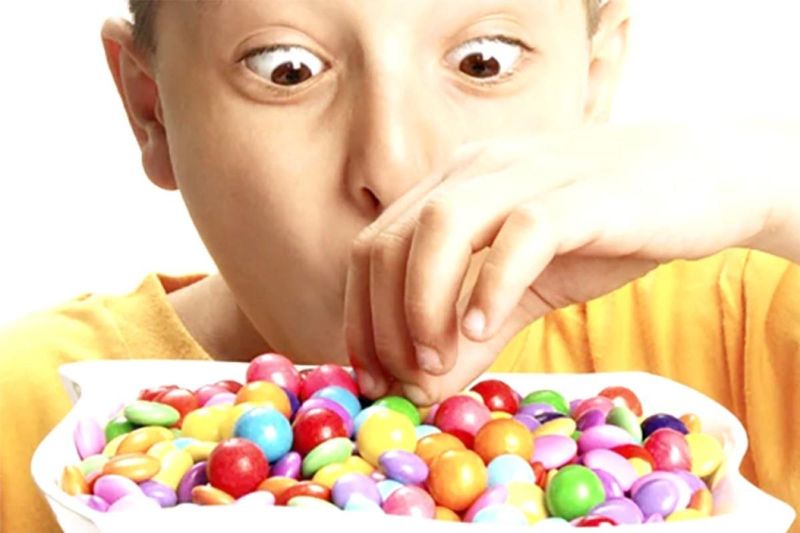
Every parent swore by this one—but science says the birthday party chaos wasn’t the cake’s fault. My mom, equipped with a cake knife and a wary eye, always blamed sugar for our high-energy antics.
Scientific research shows no direct link between sugar consumption and hyperactivity in children. The excitement of parties and the presence of other kids is more likely to cause a sugar-high illusion. While sugar isn’t the cause of energetic outbursts, moderation is still wise for other health reasons.
The truth is, kids will be kids, cake or no cake. So, the next time you see party pandemonium, remember it’s probably more about the atmosphere than the frosting. Let them eat cake—but maybe not the entire cake!
7. Cold Weather Causes the Flu

The flu spreads more in winter, but not because it’s cold. It’s more about people being stuck inside together breathing the same air. My mother shielded us in layers, convinced the cold would usher in the flu.
While viruses like the flu circulate more in colder months, cold weather itself isn’t to blame. It’s the close quarters and less ventilation that invite these germs. So, while bundling up is wise, it won’t guarantee flu immunity, nor will it summon the virus.
The real lesson? Wash your hands regularly and maintain good hygiene, regardless of the weather. Bundling up is just to keep you cozy, not flu-proof. Winter might be chillier, but it’s no reason to lose your cool over flu fears.
8. Touching a Toad Gives You Warts
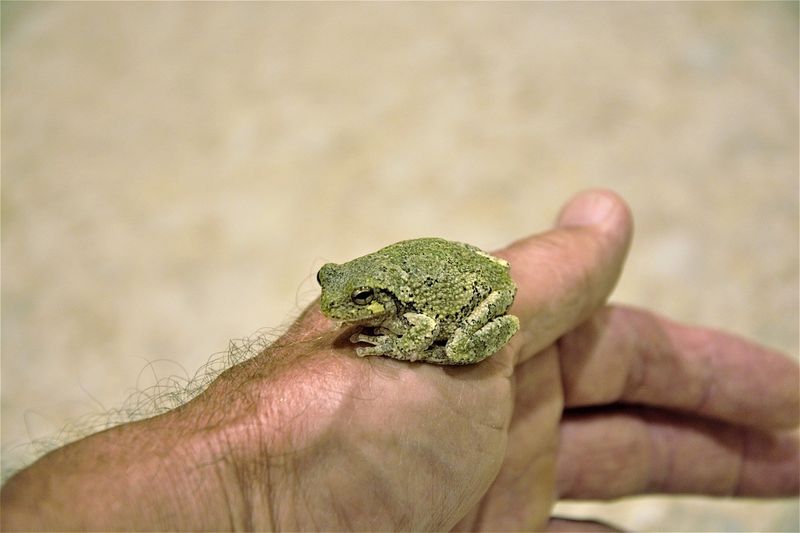
Poor toads got such a bad rap. Warts come from a virus, not from amphibian handshakes. My neighbor’s garden toad was the subject of much speculation and kept at a distance for fear of warts.
Human papillomavirus (HPV), not toads, is the culprit behind warts. The myth likely discouraged kids from picking up toads, keeping them safe from potential harm or harm to the toads. Still, the toad-wart connection stuck like glue, much to the toads’ chagrin.
The truth? You can pick up toads without worrying about warts—just perhaps wash your hands after. The real challenge is convincing your friends that toads aren’t wart factories. Hop along and enjoy nature, wart-free, and let the toads have their peace.
9. Don’t Swim After Eating — Wait 30 Minutes or You’ll Cramp and Drown

The post-lunch swim ban was legendary. In truth, minor cramps maybe, but drowning? Highly unlikely. I remember many a poolside line-up, waiting impatiently for 30 minutes to pass.
While digestion does divert some blood from muscles, causing potential discomfort, it’s not enough to make you sink like a stone. The myth likely served more as a safety buffer, ensuring kids rested between eating and swimming high-energy laps.
The takeaway? Listen to your body, but don’t feel bound by the clock. Enjoy your meal and your swim, just not simultaneously in the deep end. Whether you wait or not, the choice is yours—just remember to stay safe and have fun!
10. Hair Grows Back Thicker After Shaving
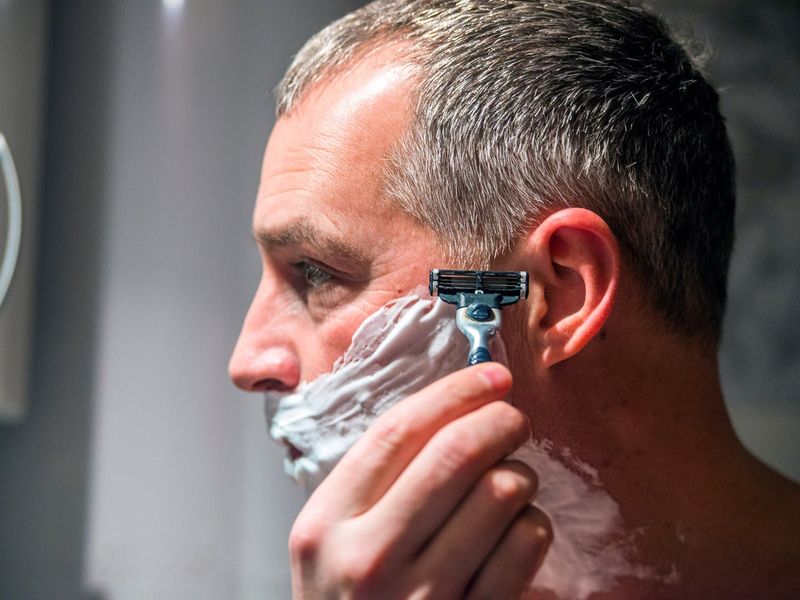
Nope—it just looks that way because of the blunt ends. Still, this myth refuses to die. My first shave was a rite of passage, filled with the hope of a more rugged appearance.
When hair is shaved, it loses its tapered end, making it appear thicker. It’s a visual illusion, not a follicle fact. The myth persists, perhaps as a deterrent against young shaving experiments. But fear not, shaving won’t turn you into a wooly mammoth overnight.
The result? A smooth face and a little more shaving wisdom. Whether you’re braving your first shave or faced with the decision to shave, know that you control the razor, not the regrowth. Shave on, myth-busters!
11. Feed a Cold, Starve a Fever

A classic rhyme that sounds like medical advice but isn’t. Both need fluids and nutrition, period. My mom’s kitchen was like a soup studio, ready to feed colds but wary of feeding fevers.
The truth is, staying hydrated and nourished is crucial whether it’s a cold or fever. The body works hard to recover, so it needs all the support it can get. This old saying might have sounded catchy, but it’s not a rule to live by.
The key? Listen to your body and eat when you’re hungry, regardless of what you have. Whether it’s chicken soup or crackers, the focus should be on comfort and care. So, feed when you need, and starve the myth instead.
12. Lightning Never Strikes the Same Place Twice

Tell that to the Empire State Building. It gets hit around 20–25 times per year. My dad used to joke that our garden shed was a lightning magnet, but thankfully, it was spared.
Lightning can and does strike the same place multiple times, especially tall or isolated structures. The myth possibly originated as a way to reassure people after a close call. The reality is that lightning follows the path of least resistance, regardless of historical strikes.
The lesson here? If you’re caught in a storm, seek shelter. Lightning doesn’t keep score, so stay safe and let nature do its thing. The next time you hear thunder, think twice before assuming a bolt won’t revisit.
13. If Your Ears Are Ringing, Someone’s Talking About You
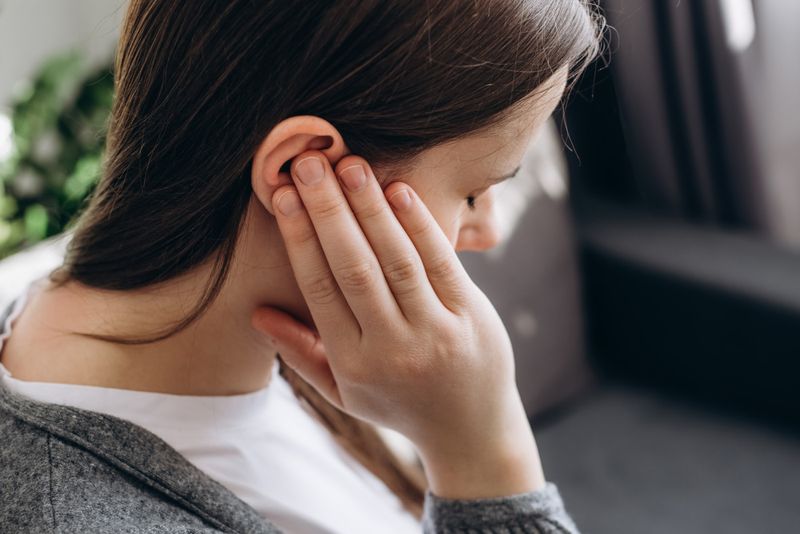
A mix of paranoia and superstition—but hey, it adds drama to silence. I grew up convinced I was the subject of endless conversations whenever my ears tingled.
In reality, ear ringing is more likely due to tinnitus, not gossip sessions. The myth adds a touch of intrigue to an otherwise mundane experience, turning ear ringing into a social spectacle. Despite scientific explanations, the idea persists, perhaps as a way to amuse and connect conversationally.
The truth? It’s more fun to imagine whispers than to focus on ear health. Next time your ears ring, enjoy the imaginary spotlight and remember—hearing your own story is far more interesting.
14. Eating Carrots Improves Night Vision

This WWII-era myth was actually British propaganda to cover up radar tech. Carrots are healthy, but you won’t get superhero vision. My grandfather championed carrot consumption with tales of nocturnal prowess.
While carrots are rich in Vitamin A, essential for eye health, they won’t give you night vision. The myth was cleverly crafted to boost morale and carrot sales, not facts. Despite lacking night vision, carrots still make a crunchy, nutritious snack.
The bottom line? Enjoy carrots for their health benefits, not magical sight. Whether or not you see better, you’ll be getting a dose of nutrients. Let carrots be part of your diet, but don’t expect to see in the dark.
15. If You Drop a Piece of Food, You Have 5 Seconds to Eat It Safely
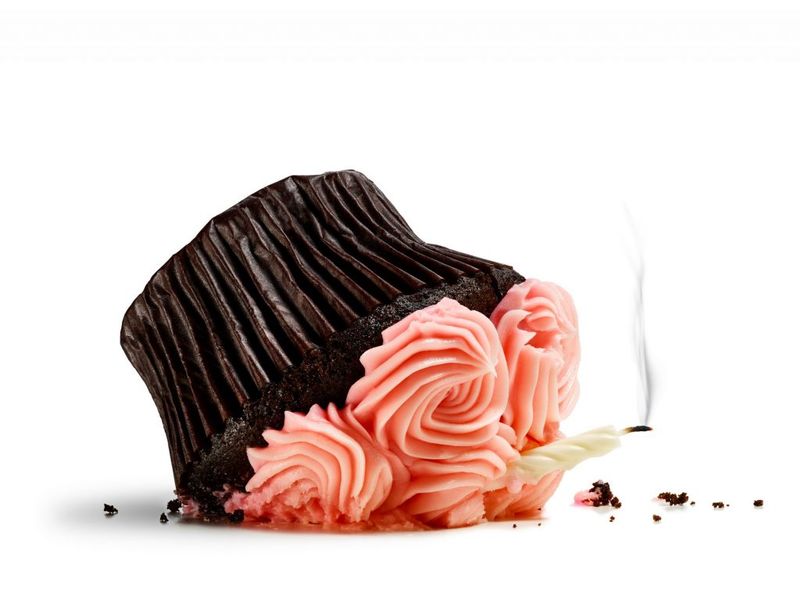
The “Five-Second Rule” lives on—even though bacteria doesn’t wear a stopwatch. I confess, I’ve been guilty of a hurried food rescue or two, using this myth as my defense.
In reality, bacteria can adhere to food almost instantly, regardless of the time spent on the floor. The myth offers a sense of reassurance when salvaging a treat. But whether it’s five seconds or five minutes, the floor’s still not the cleanest plate.
Yet, we cling to this rule because it offers a playful excuse. The lesson? Clean floors make for safer snacks, but remember—sometimes it’s better to let the cookie crumble. If you’re unsure, maybe consider grabbing a fresh one instead.
